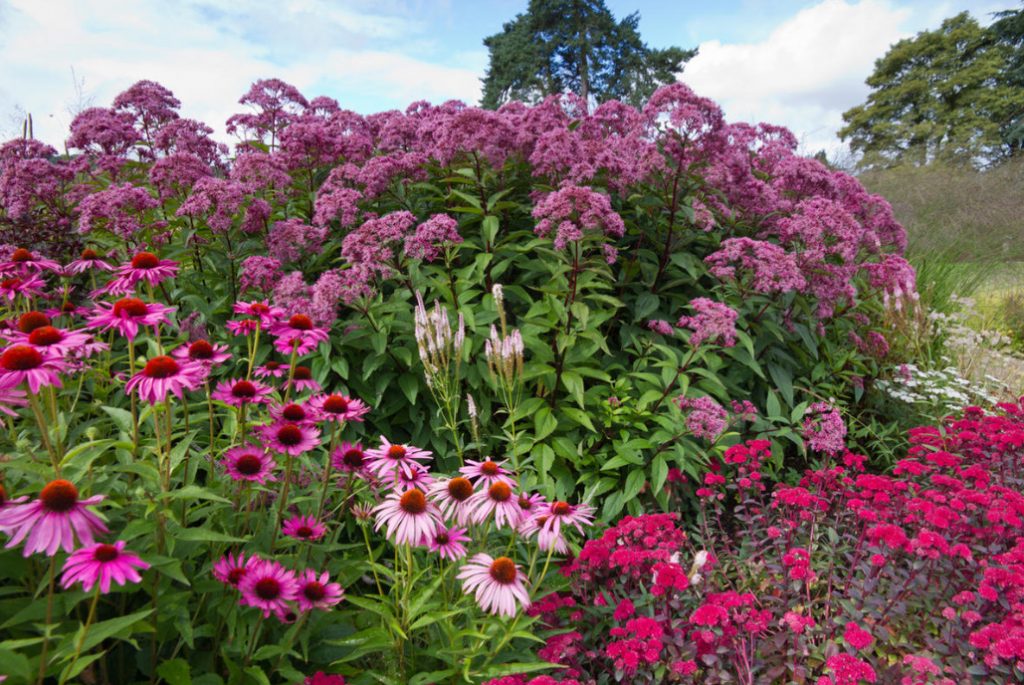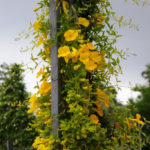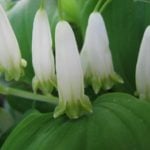When creating flower beds, there is always a temptation to fill them with all your favorite plants at once. But not all flower cultures successfully get along together, and in their appearance they sometimes compete with each other. Properly place the plants on the bed will help the plan.
Let’s create an autumn composition. It contains flowering perennials in autumn, as well as ornamental grasses. Strong millet stalks and spikelets, Solidago, Eupatorium and Hylotelephium seed pods will survive the first winter months, and the seeds will provide food for birds in winter.
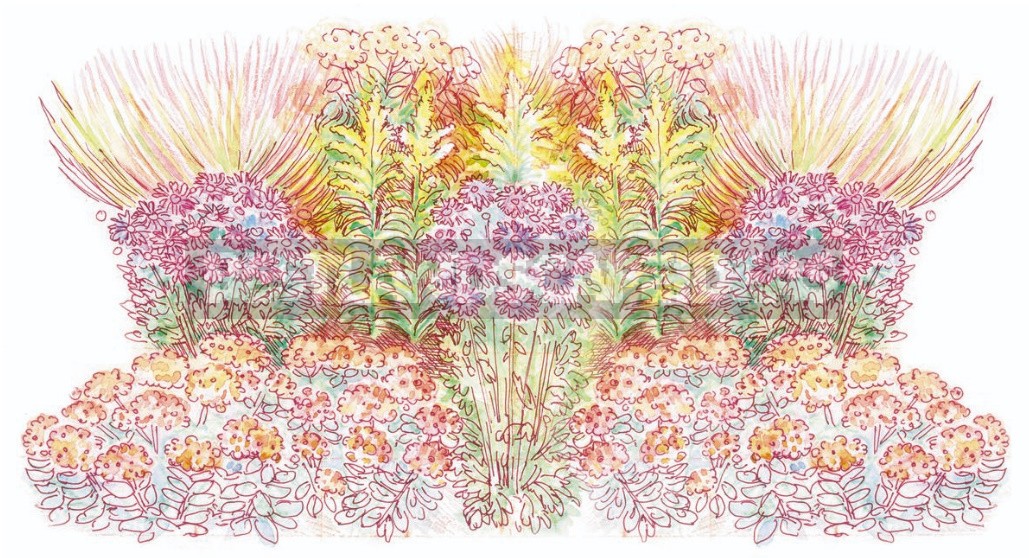
The plan of the flower garden “Autumn beauty” is presented below. Each plant is marked with its own number. A short list of species can be found in the caption to the plan.
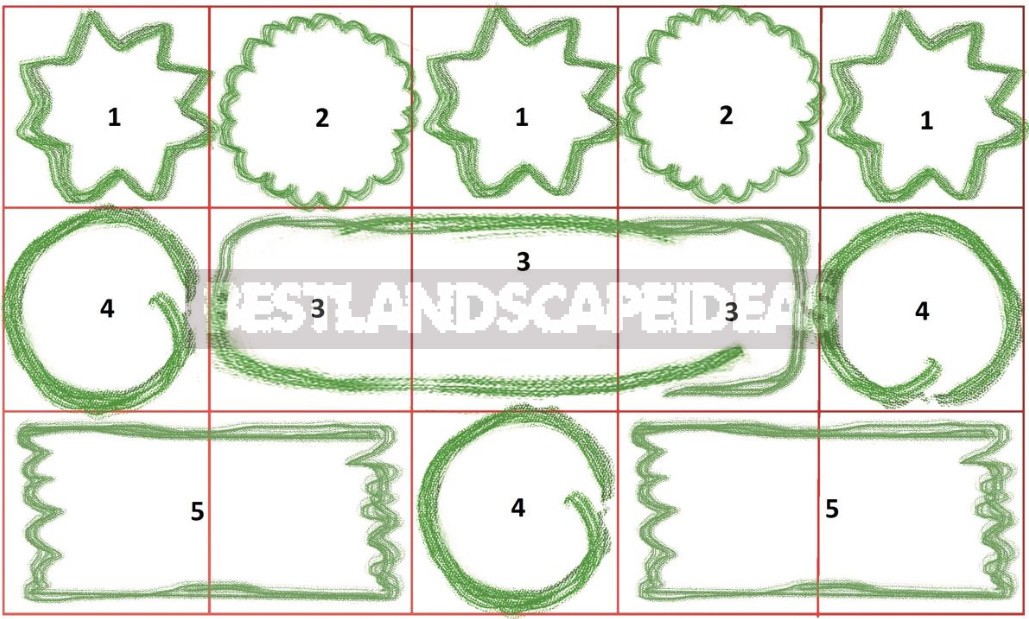
Flower garden plan: 1-Panicum; 2-Eupatorium; 3-Solidago; 4-Aster; 5-Hylotelephium
Tip. The plan of our flower garden is made in the form of a rectangle. This module you can take as a basis and repeat it several times to create a long curb along the driveway or walkway, wall of the house or fence. And if you need to decorate a place on both sides of a bench, arch or walkway, just repeat this module on the other side.
5 plants for flower garden
You probably already noticed that this composition uses a fairly limited range of plants, and this only simplifies the task: to make such a mix is not difficult. If you are a novice gardener, it is better to learn how to design flower beds from a small number of species. If some plant you do not like or it is difficult to find, you can choose alternative options.
Panicum virgatum
Panicum virgatum is a long-lived warm-growing herb. It begins to grow late in spring, sometimes in early summer. Develops quickly and powerfully, if the summer was warm. Panicum virgatum should be planted in a Sunny, warm place. Soils can be any, from moderately dry to moist, from sandy to fertile, up to heavy clays.
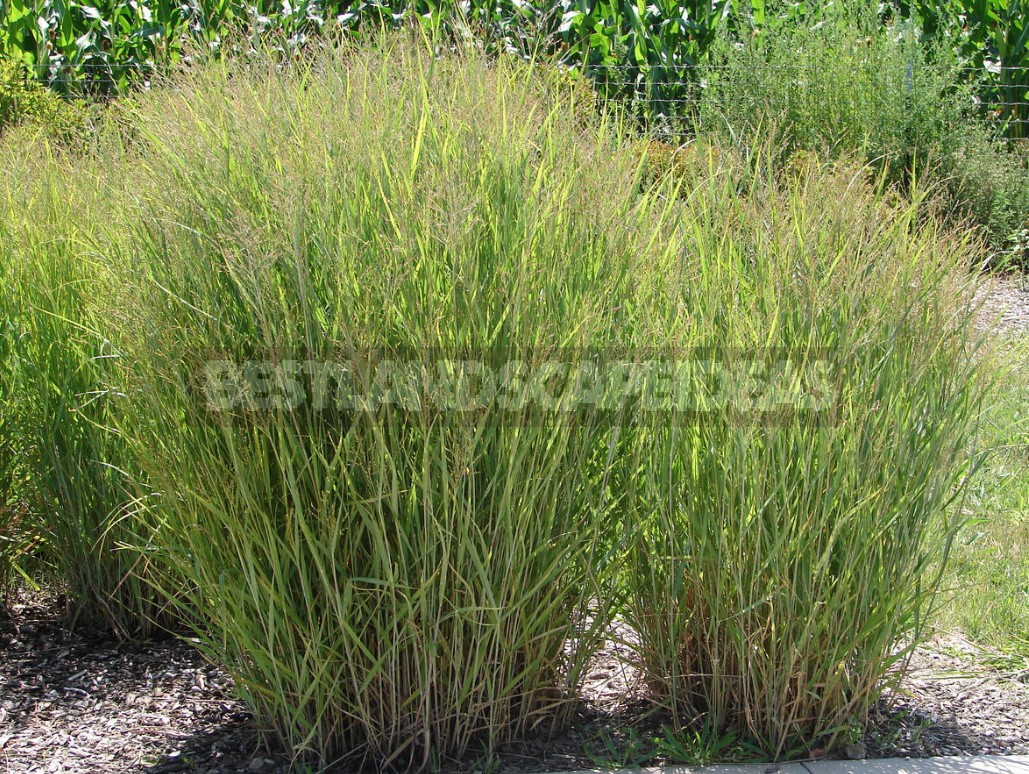
The plant is designed to withstand periodic flooding. Water the millet in dry weather. During the growing season, it is desirable to feed the plants 1-2 times with a complex fertilizer. In the spring, cut off the entire aboveground part. Share Panicum virgatum also in the spring.
Eutrochium purpureum
This perennial rhizomatous plant with straight stems reaches 1.5 m in height. The leaves are large, pointed, serrated on the edge. Small baskets are collected in corymbosa inflorescences up to 20 cm in diameter. The flowers are light pink to purple-purple, rarely white.
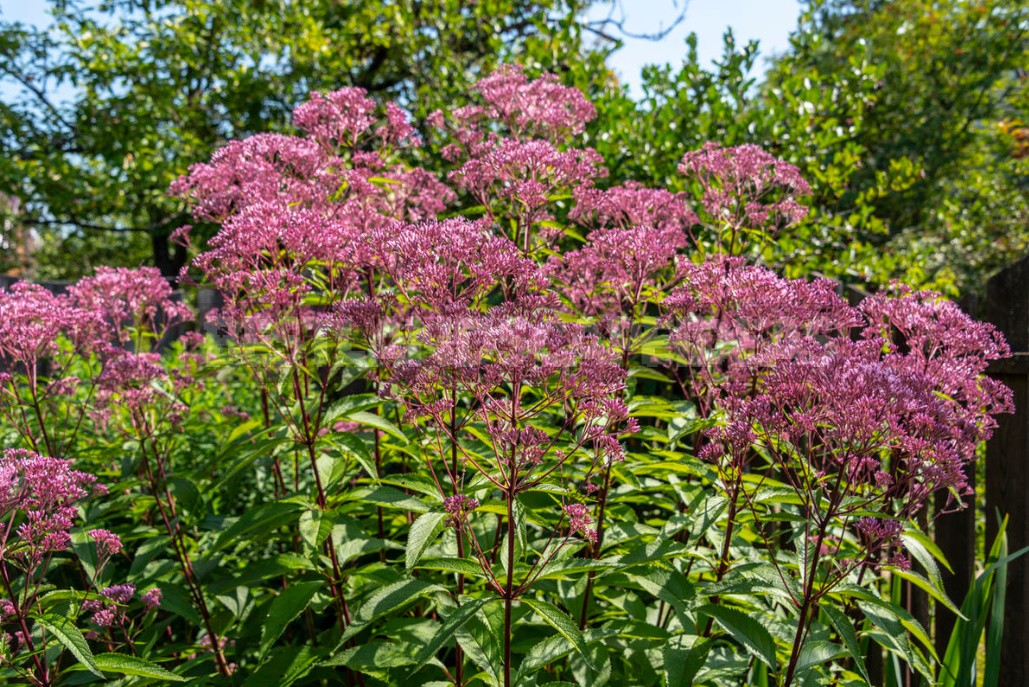
Eutrochium purpureum blooms in July-August for 30-35 days. Winters well without shelter. Wonderful compact variety ‘ Little Joe’ with smoky pink inflorescences of small flowers has a height of only 90-120 cm.
Solidago hybridum
There are many interesting hybrid forms of Solidago. In our flower garden used variety ‘Goldstrahl’ height of 90-100 cm, with paniculate inflorescences up to 20 cm long. The flowers are Golden yellow. The plant blooms in September for 35-40 days. Solidago is successfully grown both in open Sunny places and in partial shade. Varieties are hardy, not demanding to soils, but grow better on heavy wet soils in partial shade.
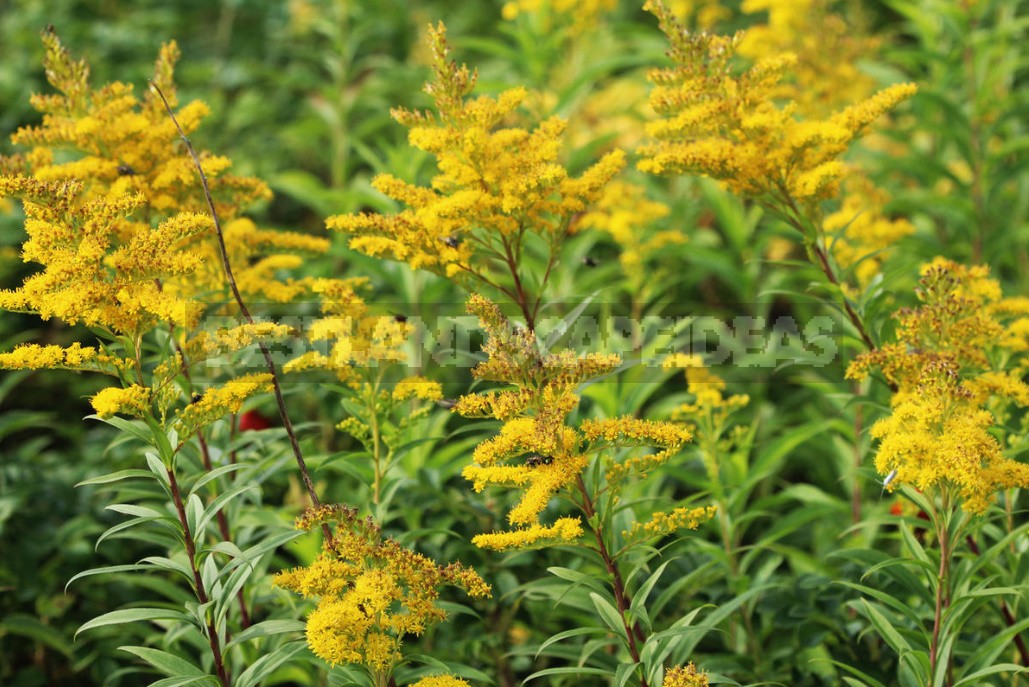
Symphyotrichum dumosum
It is a perennial herb with erect, strongly branched stems up to 50 cm tall, forming hemispherical bushes. Leaves sessile, lanceolate, dark green, numerous. Inflorescences up to 3 cm in diameter, collected in loose shields, tongue flowers light purple, rarely white. Blooms very abundantly in August-September for 35-40 days.
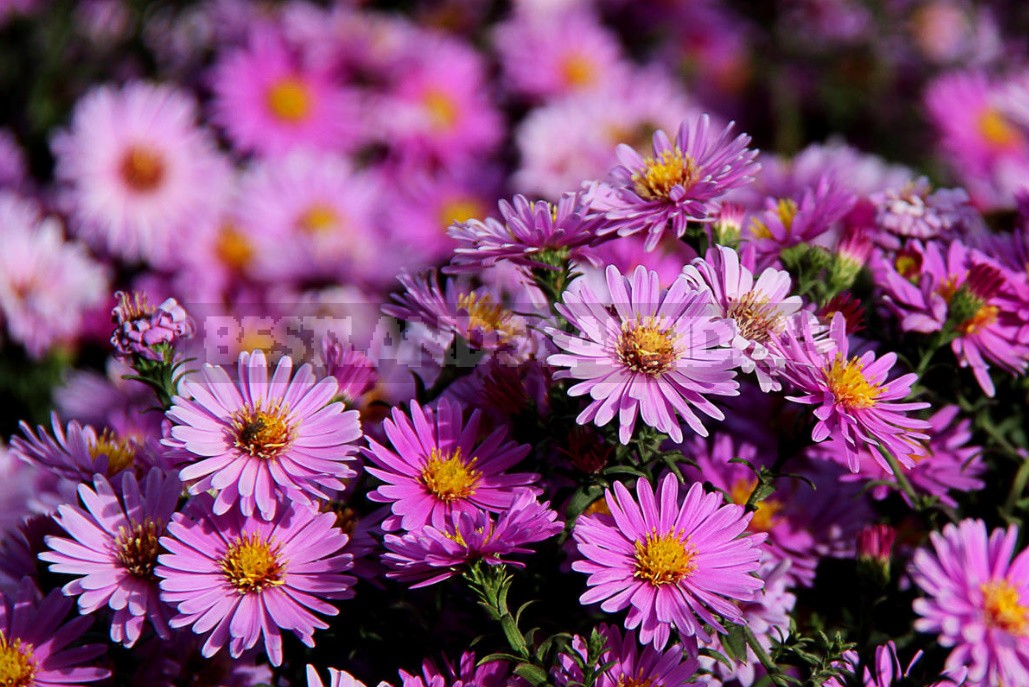
This species is frost-resistant. It grows poorly in dry and hot places, soil moisture does not tolerate. Soils need fertile, alkaline, location-Sunny. Requires fertilizing throughout the growing season and watering in dry weather, especially during budding. These asters suffer from powdery mildew. When wet and cold summer flowering is reduced.
Hylotelephium
Corymbosa inflorescences in Hylotelephium large (up to 15 cm in diameter), multi-flowered. The most common light pink and bright crimson-pink color, but you can find plants with white, lilac and purple inflorescences.
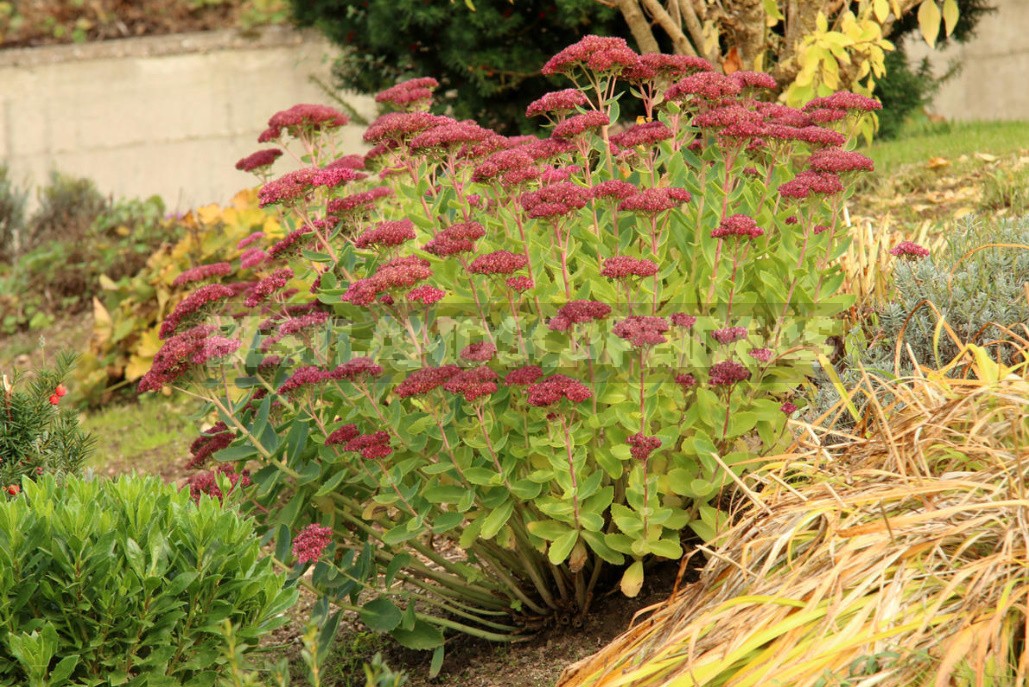
The variety ‘Helmut’ pink flowers. It blooms from September to November. The duration of flowering depends on the weather.
From snow to snow
Let us consider in detail how our flower garden will change throughout the garden season. Recall that the peak of the decoration is in the fall.
Spring
If you add to this composition spring and summer bulbous and finely bulbous, such as Crocus, Narcissus, Hyacinthus, Allium, you will see that this is not only an autumn composition.
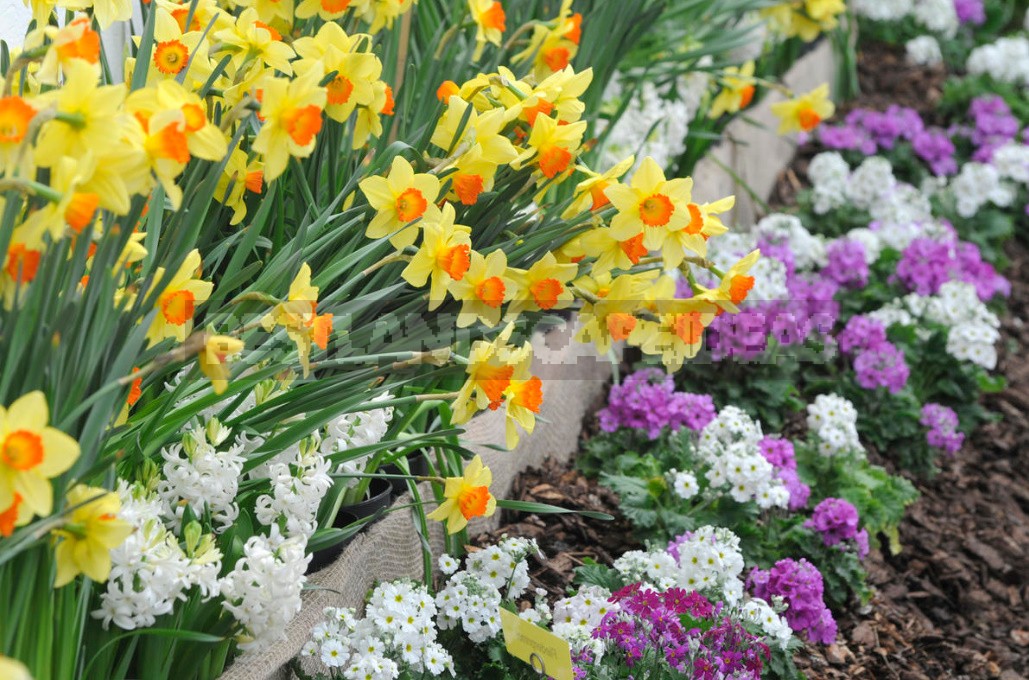
Summer
Beautiful grayish-green leaves and purple flowers Hylotelephium, which appear in late summer. In July-August, against the background of lush green bushes stand out and large smoky pink inflorescences Eupatorium ‘ Little Joe’, this is a real decoration of the garden in the second half of summer. Aster ‘Wood’s Purple’ blooms very abundantly in August-September for 35-40 days.
Autumn and winter
In September, Solidago ‘Goldstrahl ‘ blooms for 35-40 days. This plant grows quickly, so the bushes are divided every 3-4 years, it is better in the spring, but you can also fall. Under winter, the aboveground part of Solidago is cut to a height of 15 cm.
During this period, the faded inflorescences of Eupatorium are very attractive, they acquire a silvery-white color. After flowering, it is better to cut off the old inflorescences, and for the winter-the entire aerial part. If you leave dry inflorescences in the garden, you can get self-seeding. Share bushes Eupatorium spring or late summer. Often divide and transplant it should not be, it is durable. The overgrown Bush looks much more attractive than a young plant.
Still good Hylotelephium, pleasing flowering before the first snow. In adulthood (5-6 years), it is desirable to rejuvenate the plant by dividing the Bush. It is better to do it in the spring, but it is allowed to plant in the autumn.

In autumn, the color of the leaves of millet ‘Shenandoah’ appear scarlet shades. Before the snow continues flowering Aster ‘ Wood’s Purple’, its underground part winters in the form of a compact rhizome with many daughter buds. In older specimens, the shoots sit very tightly on the mother part of the plant, the 6-7-year-old Bush has more than 90 stems. With age, the Bush forms a bump on the surface, daughter shoots die in winter, and the whole plant freezes. Therefore, it is recommended every 2-3 years after cutting the stems to mulch asters with a mixture of peat and compost (1:1).
